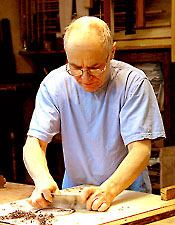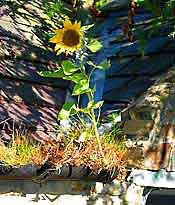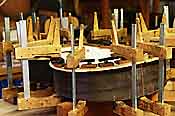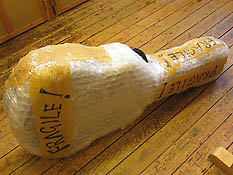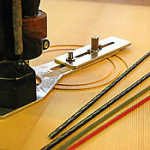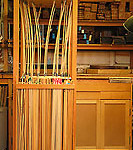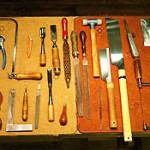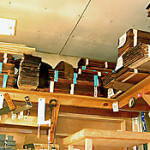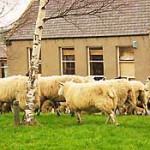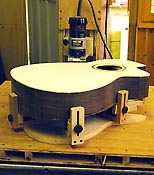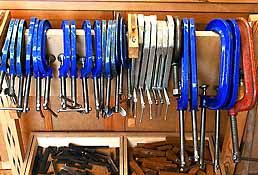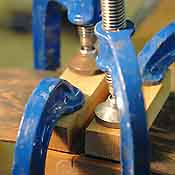Construction & Design
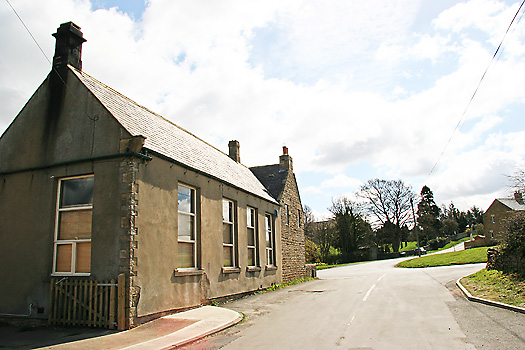
I build my instruments in the Old School, Whitley Chapel, a small village in the North of England. Whitley Chapel is in the hills above the market town of Hexham, just below open moorland. It’s about fifty miles south of the Scottish border and a dozen miles or so from Hadrian’s Wall.
The school makes a great workshop; big windows giving lots of light looking onto a country road and green fields.
I’ve divided it up into two handwork rooms with a machine room in between. With wood stacked all around, and jigs and moulds hanging on the walls, it’s a battle to find room for everything. It’s hard to believe how spacious it seemed when I moved here in 1979.
Over the years I have found which woods best suit my designs, as discussed here.
The handwork room at the north end of the building has windows on two sides giving plenty of natural light. There are work benches around the walls and a free standing bench in the centre of the room.
Good work requires good light, so all work areas are brightly illuminated by spotlamps or adjustable bench lights.
Jigs and tools hang on racks and wood for the next few instruments is stored on shelves near the ceiling. This is replaced from my main store above the machine room as it is used.
A stove heats the room (and wood) twenty four hours a day, seven days a week, ensuring the wood is absolutely dry before use.
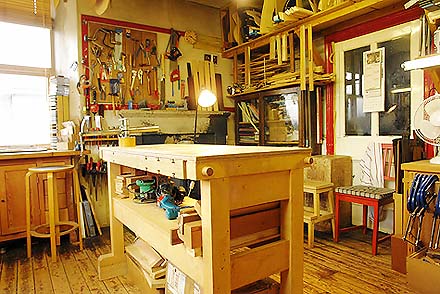
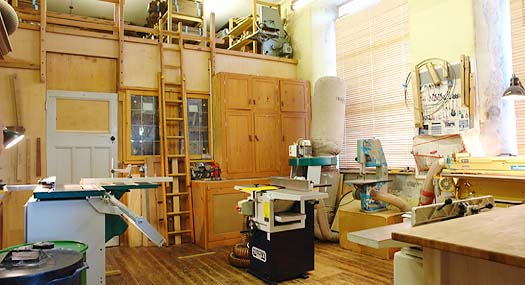
This is the machine room, containing a table saw, two planers, a band saw, a flat-bed sander, a router table, a drill press and two dust extractors. Also a variety of draws, cupboards and shelves containing power tools and general clutter. Such as the nuts and bolts that have no value but are always urgently needed just after the shops close.
Most of the time the machines stand unused, but they are in fact invaluable. The table saw and planer mostly cut the larger boards into useable sizes, daunting jobs to do by hand, while the band-saw and flat-bed sander are used more in actual instrument construction.
As with the handwork room, it is well lit with both natural and (when needed) artificial light.
